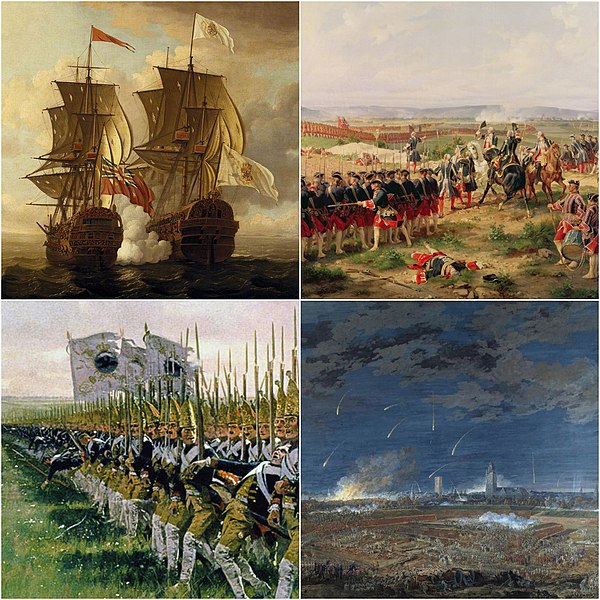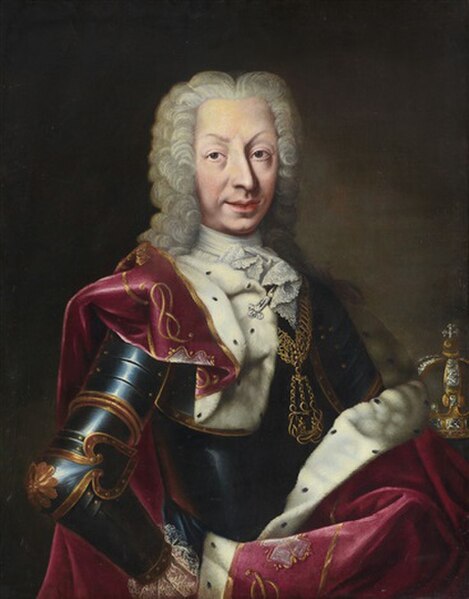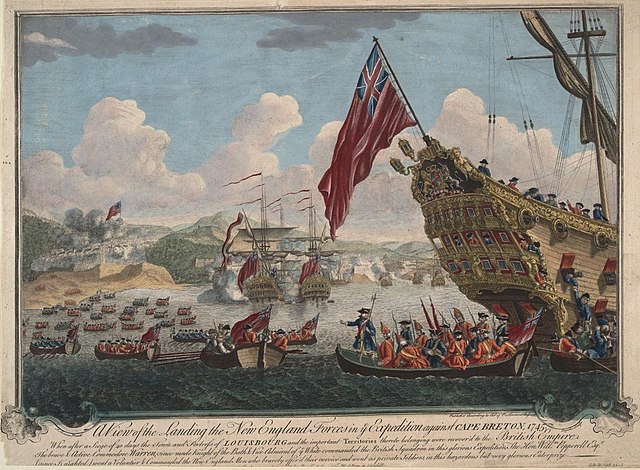War of the Austrian Succession
The War of the Austrian Succession was a European conflict fought between 1740 and 1748, primarily in Central Europe, the Austrian Netherlands, Italy, the Atlantic Ocean and Mediterranean Sea. Related conflicts include King George's War in North America, the War of Jenkins' Ear, the First Carnatic War, and the First and Second Silesian Wars.
Left to right: Capture of the Nuestra Señora de Covadonga (20 April 1743) Fontenoy (11 May 1745) Hohenfriedberg (4 June 1745) Siege of Bergen op Zoom (14 July – 18 September 1747)
Maria Theresa, whose succession was the proximate cause of the war
Charles Emmanuel III of Sardinia, who entered the war by the September Treaty of Worms
Louis XV of France by Maurice Quentin de La Tour
King George's War (1744–1748) is the name given to the military operations in North America that formed part of the War of the Austrian Succession (1740–1748). It was the third of the four French and Indian Wars. It took place primarily in the British provinces of New York, Massachusetts Bay, New Hampshire, and Nova Scotia. Its most significant action was an expedition organized by Massachusetts Governor William Shirley that besieged and ultimately captured the French fortress of Louisbourg, on Cape Breton Island in Nova Scotia, in 1745. In French, it is known as the Troisième Guerre Intercoloniale or Third Intercolonial War.
Colored engraving depicting the Siege of Louisbourg Following a 47-day siege, British forces captured the Fortress of Louisbourg in July 1745.





